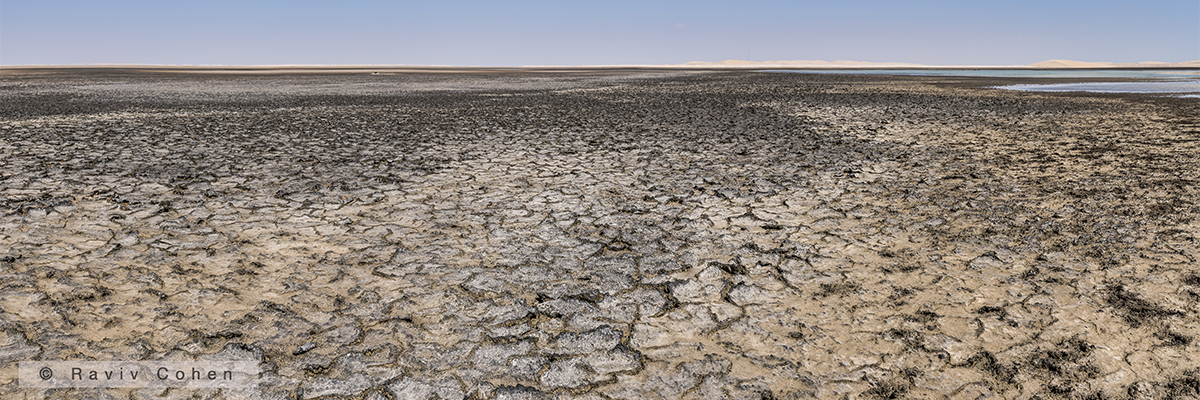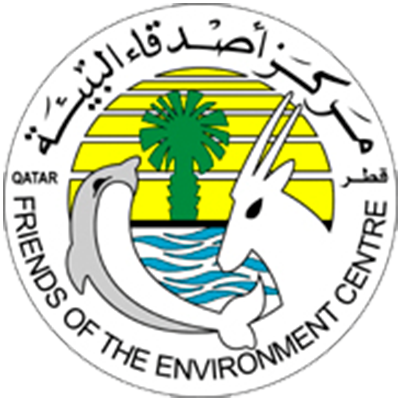
(pl. Sabkha or less accurately Sabkhas)
Sabkha or salt or salt-encrusted flat, usually forms an undefined boundary between ecosystems in the terrestrial and coastal/marine environments. Topographically, it is mostly observed adjacent to coasts, yet in Qatar there is a number of inland sabkha, in the North- and South-West, while the sand dunes in Khor Al Adaid are migrating through the sabkha.
Coastal sabkha experiences tidal cycles to different degrees, including surface and subterranean flow, as well as freshwater intake during rainfall events. Inland sabkha on the other hand, only receives rainwater and possibly some subterranean water flow from underground freshwater or brackish aquifers. The sabkha sediment may be predominantly composed of tidal flood and aeolian (windblown) deposits, and evaporates including halite deposits, gypsum, dolomite, and anhydrite.
Sabkha, is an evaporitic ecosystem, where the following extremes co-occur: desiccation, intense solar radiance, high temperatures, increased salinity, low availability of nutrients and oxygen, selecting for one of the hardiest community of organisms. On the high salinity edge of sabkha, where salt crusts make the surface impenetrable, floral and faunal establishment is rare, and resilient microbes dominate. Hardy Proteobacteria and Actinobacteria bound to sediment particles, are found here, and are equipped with a heavy genetic machinery to fight against desiccation. Proximal to them, marine mats, algae, and other seaweeds carried by tidal action are also observed.
Other organisms include gastropods feeding on marine mats, and crustaceans. The Gulf Sand Gecko may be the only reptile observed in the edges of sabkha. Its swollen fingers and elongated spiny scales on the underside are thought to be direct adaptations to life in this ecosystem. The plant community is composed of Juncus rigidus, and halophytic Halocnemum strobiolaceum, Halopeplis perfoliata, among others on the edge, while closer to the coast Arthrocnemum macrostachyum, Aeluropus lagopoides, Limonium axillare and Phoenix dactylifera may be observed among others. Each plant community selects for a distinct community of insects such as butterflies, ants, spiders and pseudoscorpions among others.
Climate change induced phenomena pose a threat to the health of sabkha as an ecosystem and to the organisms that they support. Destruction of this community of organisms by off-road driving and by other recreational activities is also a major threat.
© Chatziefthimiou AD. 2019. Coastal Marine Environment in Qatar: Sabkha. Qatar e-Nature.
Sources:
Barth J-H and Böer B, 2002
Basson PW et al, 1977
Zajonz U et al, 2002
Brauchli M et al, 2015
Metallinou M et al, 2014
Batanouny KH, 1981
Hogarth PJ et al, 2001
Sale P et al, 2011
Plus D et al, 2008







